What Animal Has White Pellet Type Droppings
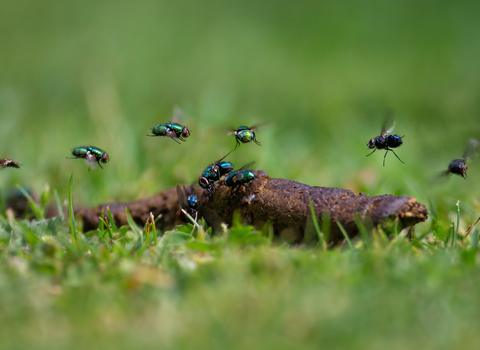
Animal poo past Jon Hawkins, Surrey Hills Photography
Poodunnit?
Whose poo can I spot?
You might meet animal poo in your garden or when you're out in the countryside. To identify it, have a notation of the size, shape and colour, and suspension it autonomously with a stick to come across what's inside. But never affect it – it tin contain harmful bacteria! Hither are some common British mammal droppings you might come across, likewise equally some tips of what to await (or smell!) for. You can click on the images to view them in more detail.

Rabbit poo by Darren Tansley
Rabbits and hares
Droppings are left in clusters of picayune, round, hard balls. They are usually yellowy-dark-brown or greenish in colour, and full of grass. Hare droppings (on the correct) tend to be slightly bigger and flatter than rabbit droppings (left mitt side).
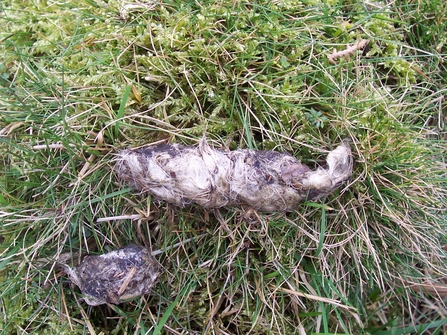
Fox poo past Sue Crookes
Foxes
Foxes produce domestic dog-like droppings that are usually pointy at 1 end and total of fur, feathers, tiny bones, seeds and berries. In rural areas, fob poo is quite nighttime, but in urban areas, where foxes eat man food waste matter, it can be lighter. Fresh droppings take a distinctively musky or 'foxy' smell.
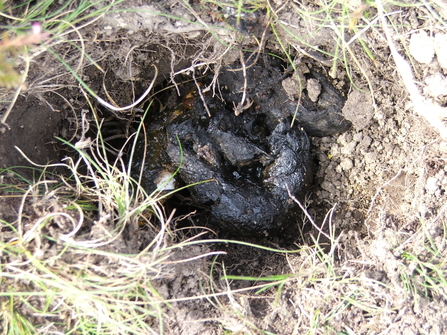
Badger poo past Montgomeryshire Wild animals Trust
Badger
Badgers poo in shallow pits called 'latrines'. Their droppings vary from business firm and sausage-shaped, to softer, slimier and darker if they've been eating lots of worms! Annoy droppings accept a sweet, musky smell.

Deer poo past Darren Tansley
Deer
Considering deer ruminate (regurgitate and chew their food twice before digesting it), in that location are no obvious contents in their debris. They produce smooth, shiny, dark pellets that are pointy at one end and often stuck together in clusters.
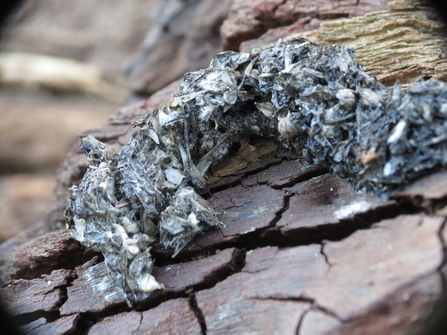
Otter spraint by Darren Tansley
Otters and American mink
Both these mammals are found in like wetland habitats. Otters produce droppings known as 'spraints', which are left in prominent places along riverbanks, on rocks or nether bridges to mark out their territories. Otter spraints are unremarkably dark green, slimy and full of fish bones, scales and crayfish parts. The 'scats' of American mink are smaller, blackness and contain fur, feathers and bones. Fresh otter poo smells like jasmine tea, while mink poo has a much less pleasant odour.

Water vole poo by Darren Tansley
Water voles, rats and mice
Though they inhabit like wetland habitats, the droppings of h2o voles and rats have several key differences. Water voles leave their droppings in large 'latrines' (piles), close to the water, whereas rats leave theirs in smaller numbers along paths. H2o vole droppings are smaller than rat droppings and are rounded at both ends; rat droppings are flattened at one end and pointy at the other. H2o vole debris are greenish, brown or purple, have a putty-similar texture and no strong olfactory property. Rat droppings are light brown to blackness, slimy and soft, and smell unpleasantly like wee. Mice produce very similar debris to rats, simply they are much smaller.

Bat poo past Montgomeryshire Wildlife Trust
Bats
Bats go out debris where they roost, so they can oftentimes exist constitute stuck to walls or on the basis under holes or copse. They have a rough advent and are filled with chewed-upwards bits of insect.
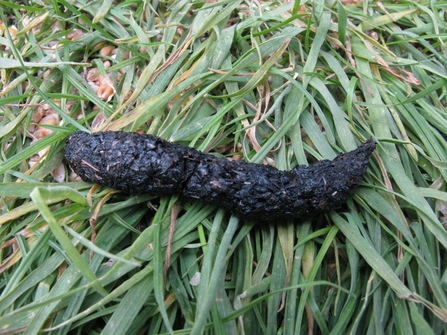
Hedgehog poo by Darren Tansley
Hedgehogs
Hedgehog droppings are about five cm long, cylindrical and generally quite dark. They might be filled with $.25 of insects and worms.
It looks similar poo, but could it be something else?
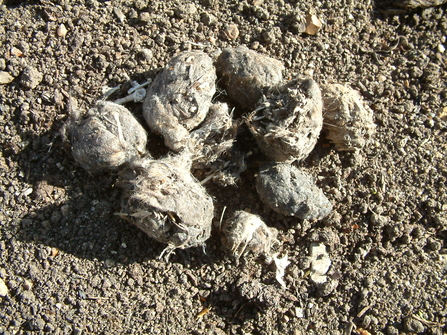
Owl pellets past Martha Cowell
Owl pellets
Owls regurgitate parts of their food that they cannot digest, such as the fur and bones of small mammals and birds. These 'pellets' tin look similar animal droppings, but do not smell and gradually turn grey as they dry out.

Deer track in snow by Amy Lewis
Source: https://www.wildlifewatch.org.uk/wildlife-zone/identify-wildlife/identify-animal-poo
Posted by: walkerbegaid.blogspot.com

0 Response to "What Animal Has White Pellet Type Droppings"
Post a Comment